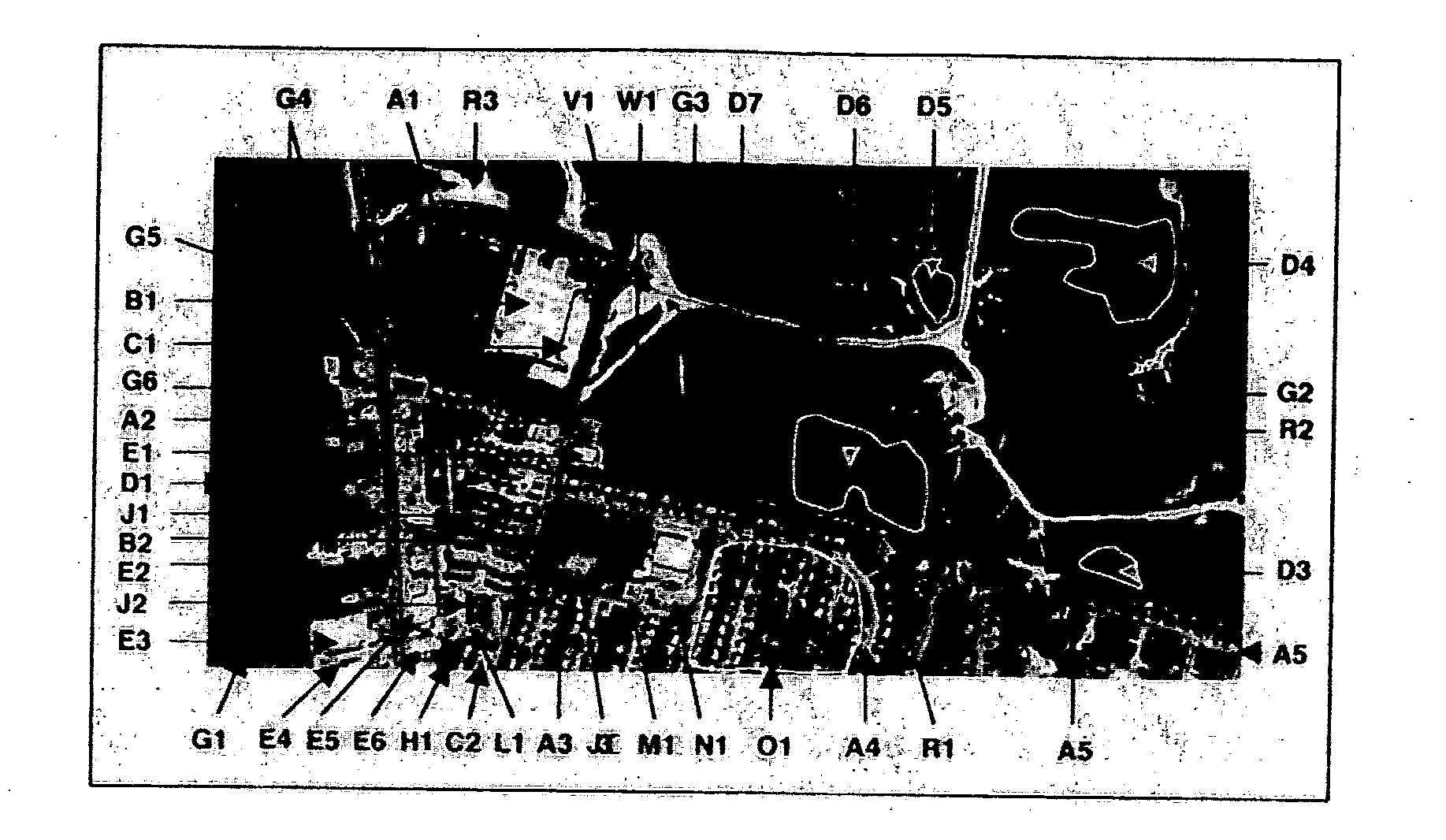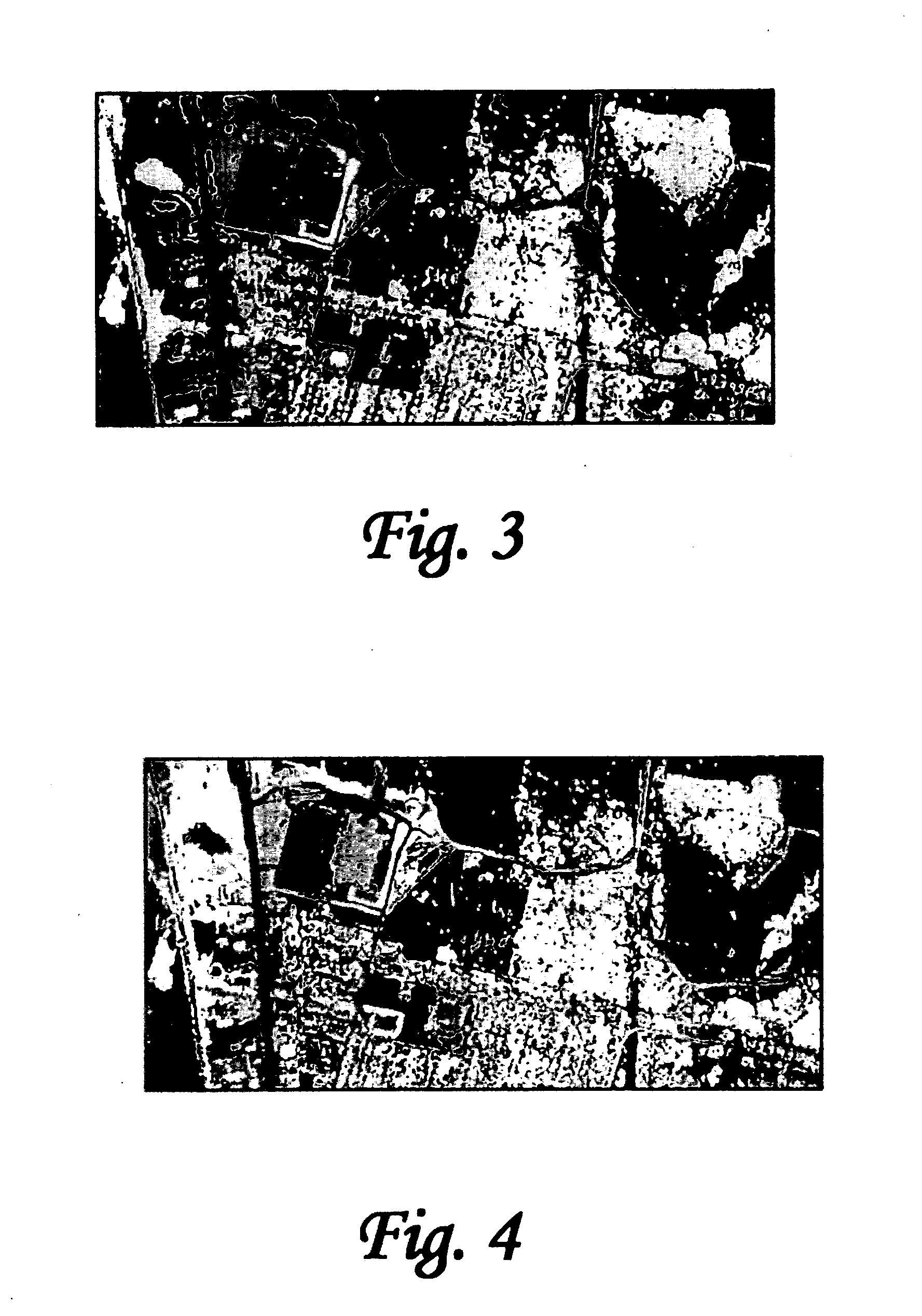Spectral mixture process conditioned by spatially-smooth partitioning
- Summary
- Abstract
- Description
- Claims
- Application Information
AI Technical Summary
Benefits of technology
Problems solved by technology
Method used
Image
Examples
example i
Data collected using a HTYDICE system at 10,000 feet were processed using a preferred embodiment of the present invention. The scenes were collected over areas that contain a diverse range of terrain features and are supported with ground truth. The scene is represented with 300 samples by 600 lines of pixel vector data having a spatial resolution of 1.5 meters. HYDICE image cubes are represented by 210 spectral bands within a spectral range of 0.4-2.5 microns (μ), however, practical considerations limit those used for computing disparities in this example to 117 bands. These 117 bands were calibrated to reflectance by the Empirical Line method based on known spectra of calibration panels located in a region outside the scene of interest. Ground truth was established by taking data from the scene during a previous site visit. No spectral data were available from ground measurements, rather spectral; data from diverse materials, as measured by field spectrometers and collected from ...
example ii
A Bayesian spectral / spatial approach to segmenting hyperspectral imagery into homogeneous regions produces a spatially-smooth labeling of regions in a scene with minimal loss of significant information and scene content. For example, insignificant clutter, such as the mottled tree patterns in forested regions, is eliminated while retaining the small, but significant, terrain features such as a small rock outcrop or building. The same HYDICE data of Example I were used in this example.
Development of the unsupervised spectral / spatial approach is extended by initializing a partitioning algorithm of the present invention with another Bayesian-based classification process. By changing the assumptions governing the class-conditional and prior probability distributions, a traditional spectral-only supervised process is recovered. This provides spectrally-optimal initial estimates for the spectral / spatial partitioning process. Initializing the partitioning algorithm in this manner effect...
PUM
 Login to View More
Login to View More Abstract
Description
Claims
Application Information
 Login to View More
Login to View More - R&D
- Intellectual Property
- Life Sciences
- Materials
- Tech Scout
- Unparalleled Data Quality
- Higher Quality Content
- 60% Fewer Hallucinations
Browse by: Latest US Patents, China's latest patents, Technical Efficacy Thesaurus, Application Domain, Technology Topic, Popular Technical Reports.
© 2025 PatSnap. All rights reserved.Legal|Privacy policy|Modern Slavery Act Transparency Statement|Sitemap|About US| Contact US: help@patsnap.com



